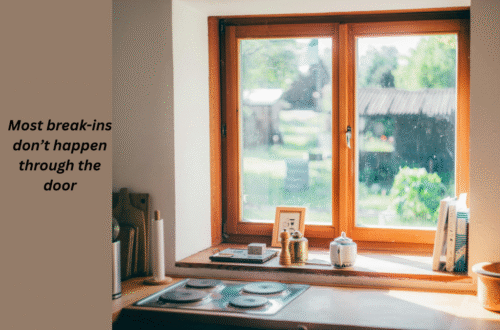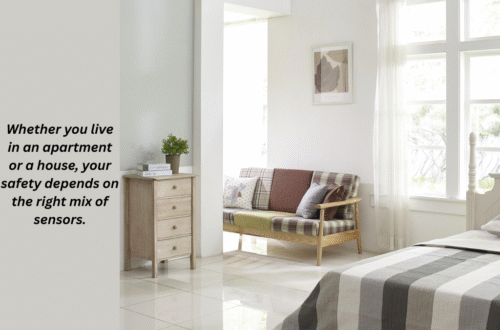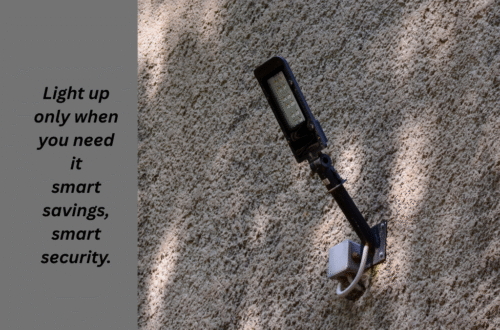
Smart Smoke & Carbon Monoxide Detectors for Renters
Smart smoke and carbon monoxide alarms have become a necessity for a safe home, and renters must not ignore the need. As of 2025, renters in the U.S. should generally expect smoke alarms in key locations. This includes HUD-assisted home and CO alarms in units with fuel-burning appliances or garages. The regulations vary as per state law. That’s why it is wise to
- As renters, you must know your local laws. You should also be aware of your state, city, or building fire codes, too.
- Test your smoke and CO alarms regularly and report faults to your landlord.
- Use sealed, long-life batteries and interconnected smoke alarms.
- Ensure CO detectors are properly placed and functional.
- Carry a personal CO alarm when traveling. It’s because usually, lodging regulations are inconsistent.
Updated Guidance for Renters in the United States Regarding Smoke and Carbon Monoxide Alarm Regulations
There is no single federal standard for smoke and carbon monoxide alarm regulations. The requirements may vary by program and state. However, here are the key national-level and state-level highlights of the regulations.
Federal Standards & HUD-Assisted Housing
This regulation is according to HUD-Assisted Housing (Section 8, Project-Based Vouchers). It was implemented on December 1, 2024. According to this regulation, rental units receiving HUD assistance are required to install hard-wired smoke alarms. These alarms must be equipped with a 10-year battery, and renters should also have carbon monoxide detectors in new locations.
NSPIRE Standards (Housing Quality/Inspection)
The National Standards for the Physical Inspection of Real Estate (NSPIRE) specifies that rental properties must have:
- At least one working smoke detector on each level.
- Smoke alarms should be inside each bedroom. These alarms should be within 21 feet of any bedroom door.
- CO detection standards per HOPWA NSPIRE guidelines.
Short-Term Rentals
A pending bill (House Bill 3918) would require smoke and CO detectors in short-term rentals. This includes Airbnb or VRBO, and makes it illegal to rent without them. This has not yet become law.
State-Level Variations
Each state has different laws on how it enforces smoke and CO detector requirements.
Smoke Alarms:
- Nearly all states require smoke detectors in residential properties.
- Most new constructions must have hard-wired, interconnected alarms
- Some states (like Iowa) mandate 10-year sealed battery smoke alarms in homes.
- California requires alarms in all bedrooms and hallways
Carbon Monoxide Alarms:
Many states require CO detectors, but the rules vary:
- In Illinois, these detectors are required within 15 feet of sleeping areas.
- In Oregon, landlords are prohibited from renting units with CO sources unless an approved CO alarm is installed.
- NCSL compilation offers a state-by-state breakdown. Most states have at least some requirement for CO detector installation in residential settings.
Safety Advice for Renters
Even if your state does not have any strong regulations, it is best to practice being proactive. follow
| Smoke alarms | CO alarms |
| You generally must have one per level of your unit, inside each bedroom, and near bedrooms | Should be placed on every level of the home, near sleeping areas, and at head to knee height (not on the ceiling). |
| Hard-wired, interconnected alarms offer the best protection. | CO gas mixes with air and doesn’t rise like smoke. That’s why proper placement is essential |
| Battery-operated units are acceptable. But those with sealed 10-year batteries require less maintenance | There are no federal requirements for CO alarms in hotels or vacation rentals. State laws are also inconsistent. That’s why carrying your own portable CO detector is often the safest choice when staying in unknown lodging |
What Renters Need to Know in 2025(Updated Smoke and Carbon Monoxide Alarm Regulations in England)
Government data shows that you are eight times more likely to die in a fire without a working smoke alarm. In 2023, there were over 26,000 dwelling fires in England. Hundreds of lives were lost in these incidents.
The Smoke and Carbon Monoxide Alarm Regulations 2022 are designed to protect renters in England. These updated rules came into effect on 1 October 2022. These regulations strengthen your rights to live in a safe environment. Also, they place more responsibility on landlords to keep you protected from fire and carbon monoxide risks. It is important for renters to understand these regulations. If your landlord does not meet them, it could risk your health and safety.
Your Rights Under the Updated Smoke and Carbon Monoxide Alarm Rules
Early detection of CO can save lives. That’s why having a working CO alarm is non-negotiable. Under the new regulations, your landlord must:
- Install at least one smoke alarm on every storey of your home.
- Fit a CO alarm in every living space
- Repair or replace faulty alarms promptly once you report a problem.
If your landlord fails to act, they can face fines of up to £5,000 per breach. Although the law doesn’t demand specific models, government guidance recommends:
- BS 5839-6 compliant smoke alarms
- BS 50291 compliant carbon monoxide alarms
Why Carbon Monoxide Alarms Protect Your Life?
Carbon monoxide is known as the silent killer. The title refers to its capability of making you ill over time without you don’t even realizing it. Carbon monoxide (CO) has no smell, taste, or color. Even a small amount can cause symptoms like
- Fatigue
- Headaches
- Dizziness
- Confusion or memory loss
In the UK, CO poisoning causes around 40 deaths and 200 to 250 hospitalizations every year. Common sources of carbon monoxide leaks in homes include:
- Fireplaces and wood stoves
- Gas dryers and heaters
- Some furnaces
- Vehicles running in enclosed spaces
How Smart Air Quality Monitors Benefit Renters?
These regulations cover minimum safety requirements. If you go for smart air quality monitoring, the devices will further protect you. These devices
- Monitor for smoke, carbon monoxide, and other pollutants 24/7
- Send instant alerts to you and your landlord if there’s a problem
- Keep cloud-based safety records to prove your home meets legal standards
What to Do if Your Home Doesn’t Meet the Regulations?
If you think that your home does not have the required smoke or carbon monoxide alarms, then:
- Notify your landlord in writing immediately.
- Keep records of your communication.
- Contact your local council if your landlord fails to act. They can issue a remedial notice and enforce compliance.
- Discuss a settlement such as you can install the detectors and deduct the cost from your rent.
Your Landlord’s Legal Responsibilities
At the start of your tenancy, alarms must be tested and working. After that, it’s your job to test them regularly. Do this ideally once a week and report any faults to your landlord immediately. On the other hand, according to these regulations, it is your landlord’s legal responsibility to:
- Install a CO alarm in every room with a fixed combustion appliance
- Install a CO alarm when any new fixed combustion appliance is fitted
- Fix or replace any faulty smoke or CO alarms as soon as they are told about the problem.
- Provide smoke alarms on every floor that has living space.
If you rent in a shared or House in Multiple Occupation (HMO), for example, shared flats, bedsits, or a house split into rooms, extra rules apply:
- Smoke alarms in every bedroom and shared hallways/landings.
- Heat alarms in kitchens.
- Alarms must be interlinked and mains powered.
- Landlords must maintain the system and carry out checks, usually every six months.
You should also be given fire safety information and know your escape routes. Regular fire drills may be carried out; take them seriously.
Know the Signs of a CO Leak
Although carbon monoxide is a silent killer. It is odorless, tasteless, and invisible; it does have symptoms like
- Headaches, dizziness, fatigue
- Nausea or confusion
- Yellow or orange flames instead of blue on a gas hob
- Soot marks around appliances
- Pilot lights that keep going out
- Excess condensation on windows
- Feeling better when you leave the property
If you suspect a leak:
- Leave the property immediately.
- Call your landlord or agent.
- Contact an emergency gas engineer.
- Test your smoke and CO alarms.
- Don’t remove batteries unless you’re replacing them.
- Keep escape routes clear and do not put a lock on fire doors
- Report any alarm or appliance issues immediately.
Top 5 Smart Smoke and Carbon Monoxide Detectors for Renters
Here is the list of the five top-rated smoke and carbon monoxide detection devices that are most suitable for renters. It’s because they are easy to install, user-friendly, and do not require permanent wiring.
Google Nest Protect
Combining both smoke and carbon monoxide detection in one unit, this detector is loved by renters. It offers voice alerts to announce the location of smoke and CO leakage. Google Nest Protect comprises features like split-spectrum sensing and nightly self-tests. It also offers motion-activated path lighting and sends mobile notifications.
Key Features
- The split-spectrum sensing uses two wavelengths of light. It helps in detecting both fast-burning and smoldering fires more accurately
- Announces the type of danger with its exact location
- Send alerts to your phone if you are away.
- Built-in motion-activated night light that softly illuminates hallways or rooms.
- Runs automatic self-tests and gives you a visual green glow to confirm everything is working.
- It can integrate into your smart home setup for voice control and automation.
Pros
- The battery version is perfect for renters. You can just mount it with screws or removable strips.
- Combines smoke and CO detection, so you don’t need a separate device
- Instant mobile alerts and voice notifications improve safety.
- Automatic self-tests mean fewer surprises.
- Pathlight is a nice bonus for nighttime movement.
Cons
- Higher upfront cost than basic detectors.
- Some smart features require a stable internet connection.
- Although long-lasting, you’ll still need to replace batteries over time.
First Alert Onelink Safe & Sound
This is an all-in-one smoke and CO alarm. It doubles as a high-quality smart speaker. The First Alert Onelink alarm offers full home integration with Alex, HomeKit, and Google Home. It is functional and stylish, which makes it great for renters who want safety and convenience in a device.
Key Features
- Monitors both smoke and CO with advanced sensors.
- Delivers high-quality audio for music, podcasts, or Alexa responses.
- Integrates with HomeKit and Google Assistant.
- Notifies your phone instantly if smoke or CO is detected.
- Mounts in place of an existing detector or with basic tools
Pros:
- Combines safety and entertainment in one device.
- Works with multiple smart home platforms.
- High-quality sound for music or voice commands.
- Sends instant alerts to your phone, even when you’re away.
- Sleek design that doesn’t look like a traditional detector.
Cons:
- More expensive than standard alarms.
- Requires a good Wi-Fi connection to use all smart features.
- Larger in size compared to basic detectors.
X‑Sense Smart Smoke & CO Detector
It is a budget-friendly alarm combo for renters, and they love it. X-Sense offers a 10-year sensor lifespan and reliable app alerts. It also offers quick interconnectivity through Wi-Fi. This detector combines a photoelectric smoke sensor and an electrochemical carbon monoxide sensor to provide dual protection.
Key Features:
- Dual smoke and CO detection in one device
- Wi-Fi connectivity for instant inter-device alerts
- 10-year sensor life with built-in battery
- Remote alerts via the X-Sense Home app
- Loud 85 dB alarm for in-home warning
Pros:
- Affordable compared to other smart alarms
- Easy, tool-free installation
- Long lifespan reduces replacement hassle
- App control and alerts enhance safety
- Can connect multiple units for whole-home coverage
Cons:
- Lacks advanced features like voice location announcements
- No smart assistant integration
- The app interface is simpler compared to premium brands
Ring Alarm Smoke and CO Listener
This one is a bit different. The Ring Alarm Smoke and CO Listener does not replace your existing alarms. This listens for your existing detectors and sends alerts through the Ring app. It is super affordable and renter-friendly, especially if you don’t want to tamper with landlord-installed units.
Key Features:
- Works with existing smoke and CO detectors
- Sends alerts via the Ring app when an alarm is detected
- Simple setup, and you just place it near your current detectors
- Integrates seamlessly with the Ring Alarm system
- Battery-powered for flexible placement
Pros
- Extremely affordable option
- No need to uninstall or replace landlord-owned alarms
- Great add-on for existing Ring security setups
- Portable and easy to move when relocating
- No drilling or wiring required
Cons:
- Does not directly detect smoke or CO and relies on existing alarms
- Works only within the Ring ecosystem
- Requires proximity to the alarm for best results
Kidde Smart Smoke and CO Alarm
Why renters love it: Newly released in partnership with Ring, this Wi-Fi-connected combo alarm sends alerts to your phone through the Ring app—no hub required. An affordable and future-forward smart alarm—releases widely in 2025.
Key Features
- Dual smoke and carbon monoxide detection
- Direct Wi-Fi connections
- Sends mobile alerts via the Ring app
- Voice alerts in addition to the siren
- Designed for easy installation and portability
Pros
- Works independently, and no security system is needed
- Affordable for a full smart alarm
- Ideal for Ring app users without full Ring setups
- Can be taken with you when moving
- Voice alerts add extra clarity during emergencies
Cons
- Not yet widely available until the 2025 release
- Lacks integration with non-Ring platforms
- Requires Wi-Fi for smart features to work
Conclusion
As a renter, you usually cannot change the drill or wiring holes without the approval of the landlord. If your landlord has not installed smoke and CO detectors, discuss the matter with them to ensure your safety. If they agree, install a smart smoke and CO detector. Since these detectors do not require much change, they will easily make your home safe.
FAQ
1. Do landlords provide carbon monoxide alarms in Britain’s rental properties?
Yes. In England, it is a must to install a carbon monoxide alarm in every place of stay.
2. How can I check if my alarms are compliant?
While the law does not require specific models, government guidance recommends:
BS 5839-6 smoke alarm
BS 50291 Carbon Monoxide Alarm
If you are uncertain, ask your landlord for proof or check the icons of the device.
3. Why is carbon monoxide dangerous for tenants?
Carbon monoxide (CO) is an invisible, odorless gas that can cause serious health problems and even death. Furious heating equipment and poor ventilation are common causes of CO leakage. Since renters are unaware of whether they have these related alarms or not. That’s why it is dangerous for renters if they don’t install the alarm system.
4. Can I install my carbon monoxide alarm as a tenant?
Yes, you can purchase and install your alarm for additional safety. However, your landlord is still legally responsible for providing and maintaining the required alarm by law.
5. How often should smoking and carbon monoxide alarms be tested?
It is recommended that you test your alarm weekly by pressing the test button. Landlords need to ensure that they are working at the beginning of each tenancy, and if they become defective, then to repair or replace them.





One Comment
Pingback: